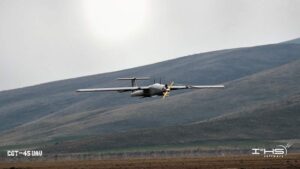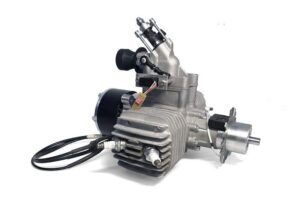Sky Power presents newly developed SP-110 FI TS
Sky Power GmbH introduced itself to the specialist public for the first time at this year’s AUVSI Xponential in Denver. Since then a series of new engines have been developed for a wide variety of Unmanned Aerial System applications (UAS).
The newly developed 110 ccm engine, SP-110 FI TS, was presented and focused solely on performance, as well as fuel optimization, ease of maintenance and space saving.
Sky Power GmbH CEO Karl Schudt said: “Sky Power has dedicated itself to the development of high-performance engines based on 2-stroke and Wankel engine technology, that are used in demanding UAS applications. For this reason, we have optimized the existing SP-110 FI TS yet again, in order to make it even more efficient for the future tasks of our customers.”
The newly developed SP-110 FI TS has a system carrier mounted above the two cylinders. Its engine injection system is also mounted on this system carrier and both the injection system as well as the system carrier are screwed firmly together with the engine. All data lines of the sensors, which gather engine data at a variety of measuring points and transmit these to the ECU030, are bundled on the system carrier.
Schudt added: “The system carrier is fixed to the engine with screws. If faults occur, this can be completely dismantled together with the injection system. To do this, the screws and all plug connections are detached. A new system carrier with all modules and data cables can then be mounted and screwed together. As a result, the engine is operational again after just a few minutes, since the ignition system is passive and is controlled by the ECU.
“At the request of the customer, the system carrier can also be left out. In that case, all systems are positioned in the UAS body, whereby longer cables are required and the integration of the engine is more complex.”
Plug connectors from racing were chosen for the data cables. Plug connectors according to MIL specifications are also possible.
The SP-110 FI TS is available as a petrol engine. A Heavy Fuel (HF) variant will follow in the middle of 2019.
“We are working on a new, lighter HF system, that besides the reduction in weight, also has a reduced fuel consumption of the HF engine as objective”, said Schudt.



